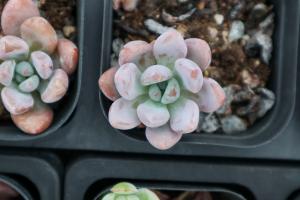Peony Planting Guide: Cultivate Your Garden with Beautiful Peonies
Peonies are one of the most popular flowering plants, admired for their large and fragrant blooms. While they are often seen in gardens, they can also be grown in pots and containers. Planting peonies is a simple process, and with the right tips and tricks, you can soon create a gorgeous display in your garden or home. Here's a step-by-step guide on how to plant peony:
Choose the Right Variety
The first step towards planting peonies is to choose the right variety. Peonies come in a range of colors, including pink, red, white, and yellow, and there are different types available, such as the herbaceous, tree, and intersectional. You need to choose a variety that suits your preferences and your garden conditions. Herbaceous peonies are the most common and are ideal for garden beds, while tree peonies grow tall and are perfect for landscaping. Intersectional hybrids provide the best of both worlds, with the hardiness of herbaceous peonies and the blooms of tree peonies.
Prepare the Soil
Peonies require well-draining soil that is rich in organic matter. Choose a spot in your garden that receives plenty of sun, and then prepare the soil by digging it over to a depth of 18-20 inches. Remove any weeds or rocks, and then loosen the soil with a fork. Mix in compost, manure, or peat moss to enrich the soil and improve drainage.
Planting Peonies
When planting peonies, it's important to ensure the roots are planted at the correct depth. Dig a hole that's wider and deeper than the root ball of the peony, then add some bone meal to the bottom of the hole to encourage root growth. Place the plant in the hole, with its eyes (buds) facing upwards, and cover the roots with soil. Water the plant well, and then cover the soil with a layer of mulch to retain moisture and suppress weeds.
Caring for Your Peonies
Peonies need a specific type of care, including regular watering, fertilization, and pruning. Water the plants deeply once a week during the growing season, and avoid getting water on the leaves to prevent fungal diseases. Fertilize in the spring with a balanced fertilizer, and then again in the fall with bone meal. Cut back the dead flowers after blooming to stimulate new growth, and cut the stems to the ground in the fall.
Conclusion
Now that you have learned how to plant peony, it's time to get started on creating a beautiful display of these magnificent flowers in your garden or home. By choosing the right variety, preparing the soil, and following the correct planting and care techniques, you can soon have a garden that's full of color and fragrance. So, roll up your sleeves and start planting today!

 how many times do yo...
how many times do yo... how many planted tre...
how many planted tre... how many pine trees ...
how many pine trees ... how many pecan trees...
how many pecan trees... how many plants comp...
how many plants comp... how many plants can ...
how many plants can ... how many plants and ...
how many plants and ... how many pepper plan...
how many pepper plan...
































